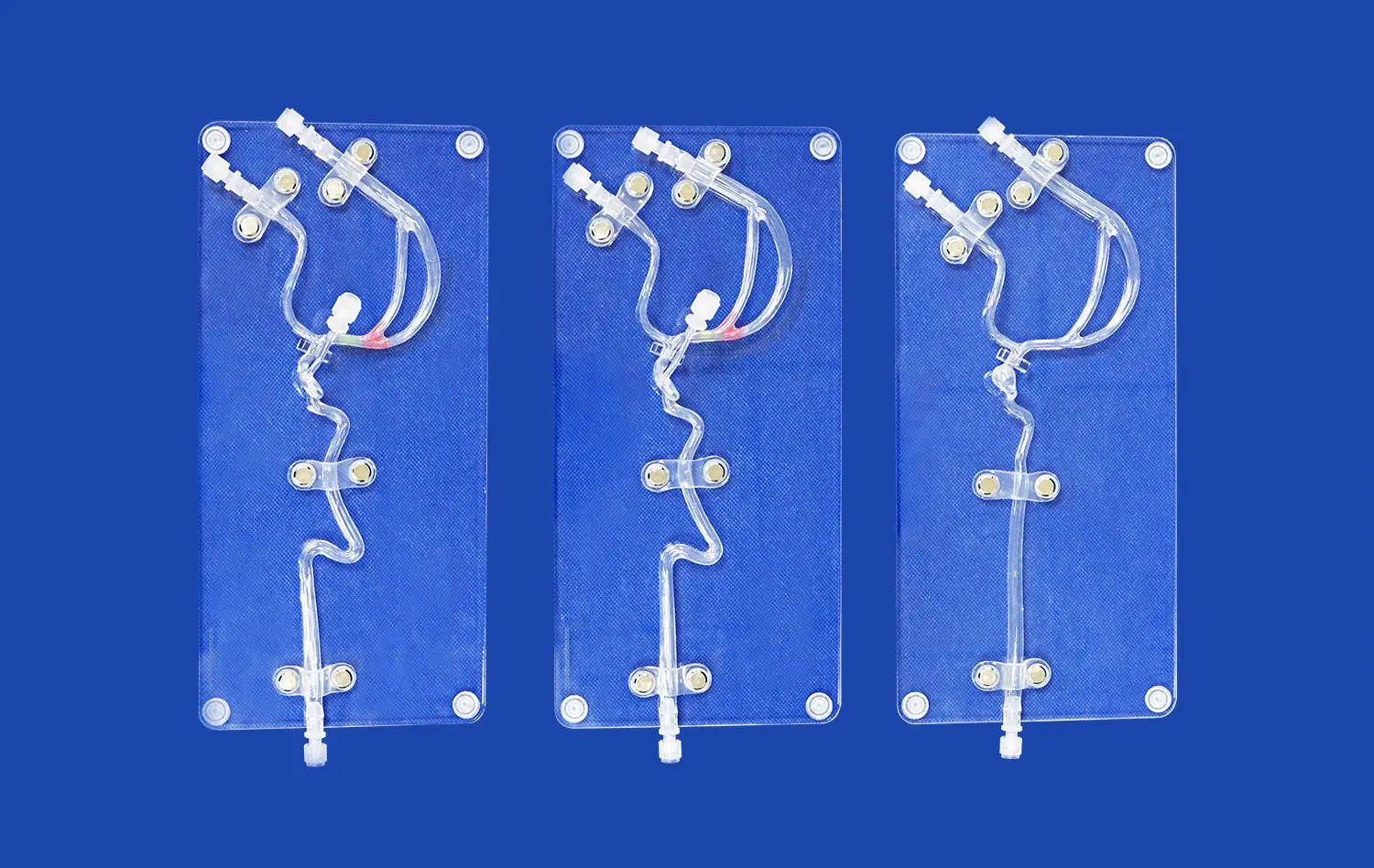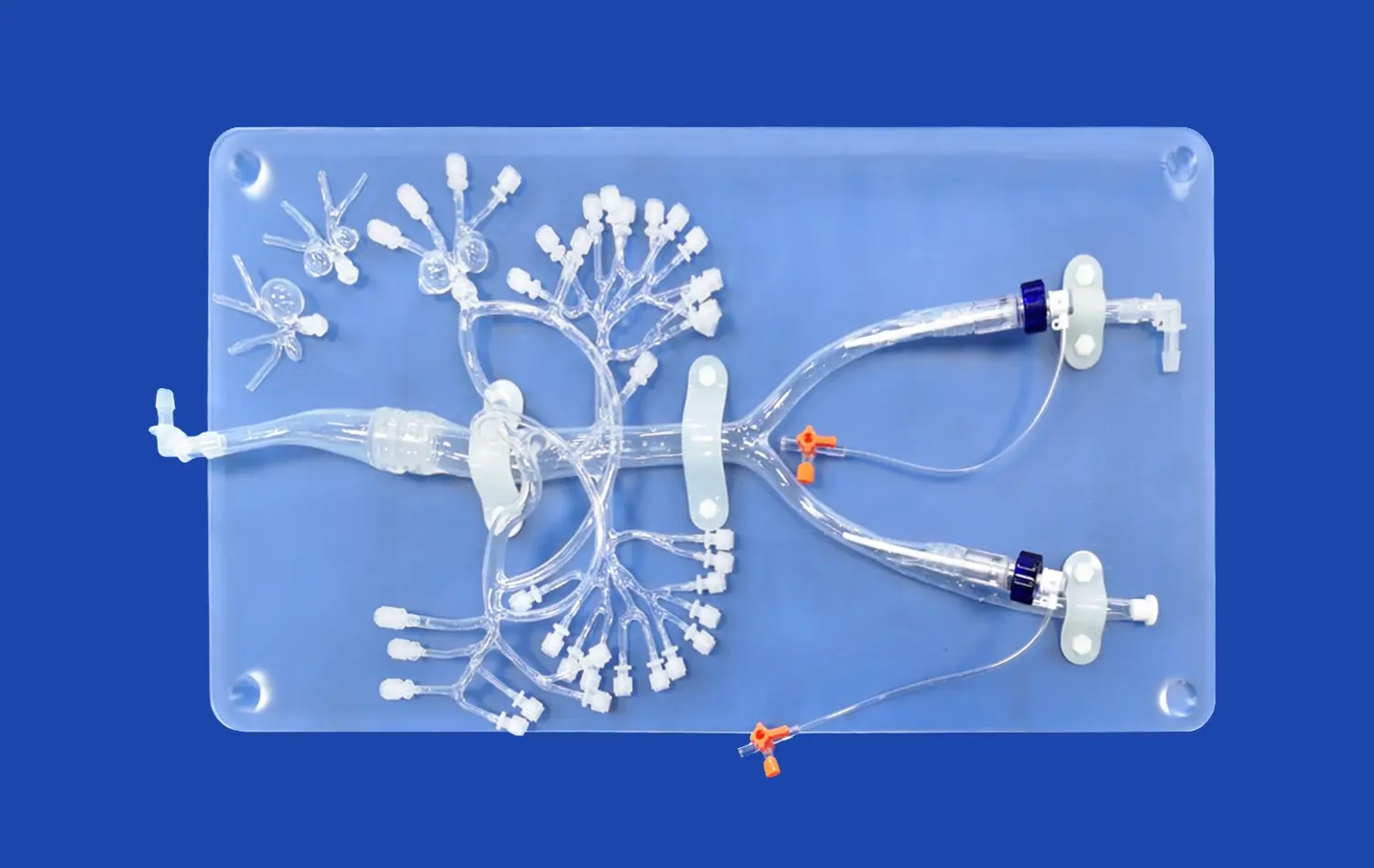What Skills Can Be Developed Through Vascular Simulation Models?
Mastering Catheterization Techniques
Vascular simulation models provide an ideal platform for mastering catheterization techniques. The leg arteries model, with its realistic representation of the arterial system, allows practitioners to practice navigating catheters through complex vascular structures. This hands-on experience is crucial for developing the dexterity and precision required in real-world procedures. Trainees can learn to maneuver through challenging anatomical variations, such as tortuous vessels or bifurcations, enhancing their ability to perform successful catheterizations in diverse patient scenarios.
Perfecting Stent Deployment
Stent deployment is a critical skill in vascular intervention, and simulation models offer a safe environment to perfect this technique. Using the leg arteries model, medical professionals can practice selecting the appropriate stent size, positioning it correctly within the vessel, and deploying it with precision. The model's ability to simulate various pathological conditions, such as arterial stenosis, allows trainees to experience different scenarios they might encounter in clinical practice. This targeted practice leads to improved accuracy and confidence in stent placement procedures.
Enhancing Imaging Interpretation Skills
While physical models provide tactile feedback, they also play a crucial role in enhancing imaging interpretation skills. Many advanced leg arteries models are designed to be compatible with imaging technologies used in interventional procedures. This feature allows trainees to correlate the physical manipulation of devices with their appearance under imaging guidance. By practicing with these models, healthcare professionals can improve their ability to interpret angiographic images, understand spatial relationships within the vascular system, and make informed decisions during interventions.
Hands-On Practice for Femoral and Pedal Artery Access
Simulating Retrograde and Antegrade Femoral Access
The leg arteries model excels in providing realistic scenarios for practicing both retrograde and antegrade femoral artery access. These access points are crucial in many vascular interventions, and mastering them is essential for successful procedures. The model's design, featuring multiple access ports, allows trainees to practice different approaches. They can learn to navigate the challenges of each technique, such as avoiding vessel perforation and managing potential complications. This hands-on experience builds muscle memory and procedural confidence, which are invaluable in real clinical situations.
Exploring Pedal Artery Intervention Techniques
Pedal artery access is becoming increasingly important in vascular interventions, particularly for patients with limited femoral access options. The leg arteries model provides a unique opportunity to practice these delicate procedures. Trainees can hone their skills in accessing and navigating the smaller, more distal vessels of the foot. This practice is crucial for developing the finesse required to perform successful pedal interventions, which often involve working with smaller devices and navigating more intricate vascular anatomy.
Overcoming Anatomical Challenges
One of the key benefits of using a leg arteries model for training is the ability to simulate various anatomical challenges. The model can be customized to represent different patient scenarios, including variations in vessel diameter, tortuosity, and the presence of calcifications or occlusions. This variety allows trainees to encounter and overcome a wide range of anatomical challenges they might face in clinical practice. By repeatedly practicing on these diverse scenarios, healthcare professionals can develop strategies to navigate complex vascular structures effectively, improving their overall procedural success rates.
Building Clinical Confidence Through Realistic Training Scenarios
Simulating Complex Pathologies
The leg arteries model's ability to simulate complex pathologies is a game-changer in vascular intervention training. Trainees can encounter and manage conditions such as chronic total occlusions, multi-level stenoses, and arterial dissections in a controlled environment. This exposure to diverse pathological scenarios builds a comprehensive understanding of various vascular diseases and their interventional approaches. By repeatedly practicing on these simulated pathologies, healthcare professionals can develop a deeper intuition for handling challenging cases, ultimately leading to more confident and effective clinical decision-making.
Practicing Emergency Interventions
Emergency vascular interventions require quick thinking and precise execution. The leg arteries model provides a platform for simulating these high-pressure scenarios. Trainees can practice rapid assessment and intervention for conditions like acute limb ischemia or arterial rupture. The model's design allows for the simulation of various emergency procedures, including thrombectomy and emergency stent placement. This hands-on experience in managing critical situations helps build the confidence and composure necessary for real-world emergency interventions.
Collaborative Learning and Skill Assessment
The leg arteries model serves as an excellent tool for collaborative learning and skill assessment. It allows for team-based training scenarios, where different members of the interventional team can practice their roles in a coordinated manner. This collaborative approach enhances communication skills and teamwork, crucial elements in successful vascular interventions. Additionally, the model provides a standardized platform for assessing and evaluating the skills of trainees and experienced practitioners alike. This objective assessment helps in identifying areas for improvement and tracking progress over time, contributing to continuous professional development in the field of vascular intervention.
Conclusion
Leg arteries models have emerged as indispensable tools in vascular intervention training, bridging the gap between theoretical knowledge and practical application. By providing a realistic, risk-free environment for skill development, these models enable healthcare professionals to refine their techniques, build confidence, and prepare for the complexities of clinical practice. The ability to simulate diverse pathologies and emergency scenarios enhances the depth and breadth of training experiences. As vascular interventions continue to evolve, the role of these sophisticated training models in shaping competent, confident practitioners cannot be overstated.
Contact Us
For more information on how Trandomed's leg arteries models can enhance your vascular intervention training program, contact us at jackson.chen@trandomed.com. Discover how our customizable, anatomically accurate models can elevate your training experience and contribute to improved patient outcomes.
_1735798438356.webp)
_1732866687283.webp)












